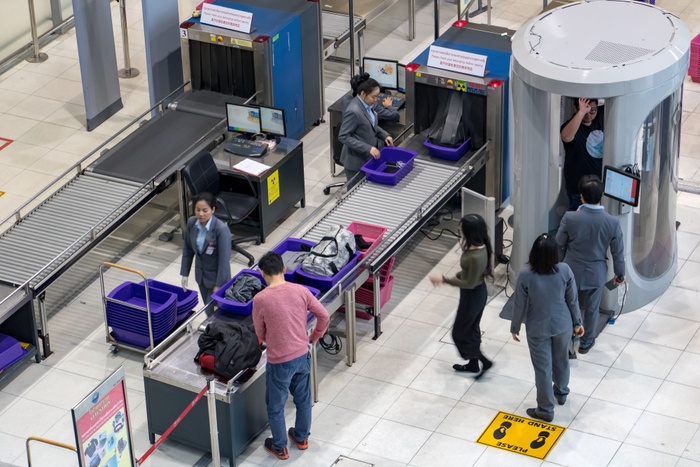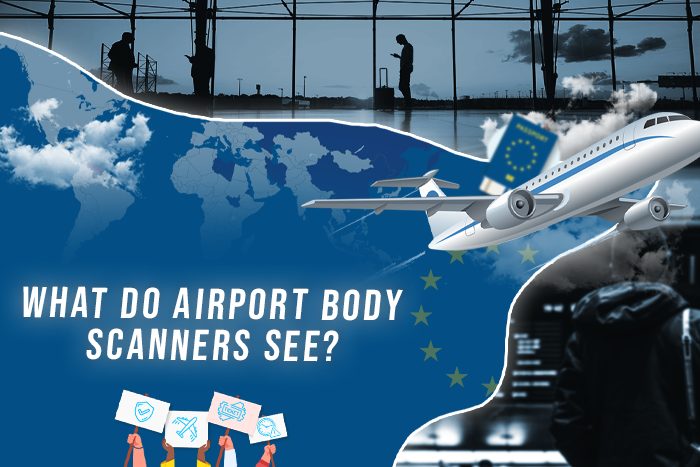Air travel can get pretty stressful. Whether you are flying domestic or international, airports have a way of making a person feel small and anxious. Add to that the nerves of a long-haul flight, long lines at the airport security, baggage claim, and boarding; the entire ordeal can make many people exceedingly apprehensive. The anxiety often sets in a day before traveling when trying to run last-minute errands while also keeping track of everything that needs to be packed. It reaches a peak when you get to the airport.
Many people get uncomfortable with extensive security checks, while others have flight phobia. Either way, your journey can get even more uncomfortable if you are unaware of what will happen next. To avoid such unpleasantness, it is a good practice to know the kinds of security checks you will be subjected to. When you know what they are and how they work, the process can be a little less intimidating.
Key Takeaways
- Airports use a variety of scanners to ensure the safety of passengers, including metal detectors, backscatter x-ray machines, millimeter-wave scanners, and cabinet x-ray machines.
- Backscatter scanners, commonly used in the US and Europe, can detect both metallic and non-metallic objects beneath clothing and in bags. They are designed to eliminate the need for pat-downs and detect any abnormalities that a security officer might miss.
- Baggage scanners are more in-depth and can outline the items inside your luggage using X-rays. It is important to check the list of banned items to avoid delays and additional stress at the airport.
Scanners Used At Airports

Airports have employed a variety of scanners that can be used to detect various metallic and non-metal objects on your person. These include metal detectors, backscatter x-ray machines, millimeter-wave scanners, and cabinet x-ray machines that help the officers detect any unusual activity and ensure the safety of the passengers.
Body Scanners
Backscatter scanners are commonly used at airports in the US and Europe. These scanners can detect metal and non-metal objects beneath clothing and in bags. Whether food items, jewelry, makeup, keys, or even hair ties and wipes, the backscatter scanner can pick things present beneath the layers. Many people consider using backscatter scanners a breach of privacy. For those who have gone through trauma or abuse, these scanners can be triggering. You can always request a pat-down from a security officer who is the same gender as you, though this generally takes longer, so make sure to allow extra time at the airport. However, a pat-down search is often not an option in the UK.
While these scanners can seem like an invasion of privacy, it may be helpful to know that they cannot see anything other than a general outline of your body. These scanners are designed to eliminate the need for a pat-down and detect any abnormalities that a security officer might miss. Sometimes bunched-up socks and hair extensions can set these scanners off too. If an airport uses an explicit scanner, the security officer is placed in a room where they will not contact the passenger directly.
Baggage Scanners
Baggage scanners are somewhat different from body scanners. Their scanning is more in-depth, and they can outline the items inside your luggage. The scanners use X-rays to detect the depth and density of the contents of your bags, which is why they are able to detect metallic, nonmetallic, and even organic material inside bags. It is advisable to go through the list of banned items to avoid further hassle and bag searches at the airport when you are already short on time and don’t want to face additional stress.
Conclusion
Airport security has been upgraded globally since 9/11. While before the incident you could arrive at the airport twenty minutes before the flight, this is not the case anymore. Whether you are travelling domestic or international, airports now use extensive scanning processes to detect any unusual or prohibited items you might be carrying. This upgrade in security provides additional safety to the passengers and minimizes the risk of a tragic event like 9/11. A combination of baggage scanners and body scanners has increased the time spent at an airport. However, it has also made air travel more secure and reduced the chances of terrorists and criminals boarding the flight.
Frequently Asked Questions
-
What kind of scanners do airports use for security checks?
Airports use a variety of scanners, including metal detectors, backscatter x-ray machines, millimeter-wave scanners, and cabinet x-ray machines.
-
What do backscatter scanners detect?
Backscatter scanners can detect metallic and non-metallic objects beneath clothing and in bags.
-
Can backscatter scanners see-through clothing?
Backscatter scanners can see through clothing to detect any abnormalities, but they cannot see anybody’s details.
-
Are backscatter scanners a breach of privacy?
Some people consider backscatter scanners a breach of privacy, especially those who have gone through trauma or abuse.
-
What should I do if I am uncomfortable with a backscatter scanner?
If you are uncomfortable with a backscatter scanner, you can request a pat-down from a security officer who is the same gender.
-
What do baggage scanners detect?
Baggage scanners use X-rays to detect the depth and density of the contents of your bags, which can outline metallic, non-metallic, and even organic material inside.
-
Why do airports use these scanners?
Airports use these scanners to ensure the safety of passengers and minimize the risk of terrorist attacks and criminal activity.
-
Can I bring banned items in my luggage and hope the scanner won’t detect them?
No, checking the list of banned items is important to avoid delays and additional stress at the airport. Baggage scanners can detect prohibited items, and attempting to bring them can result in fines or criminal charges.







